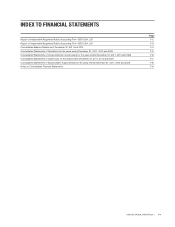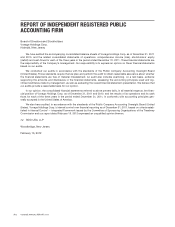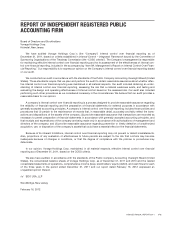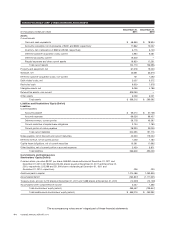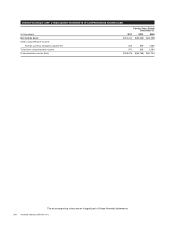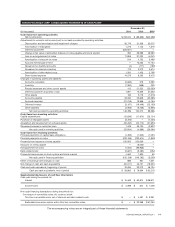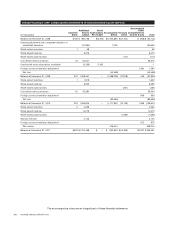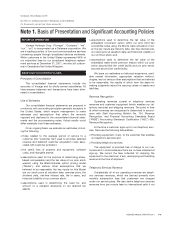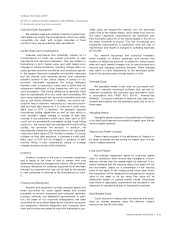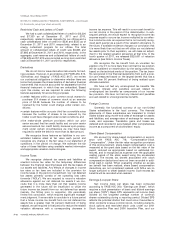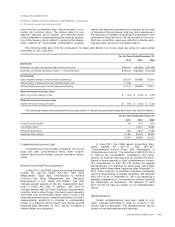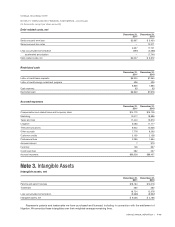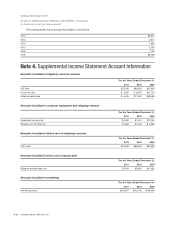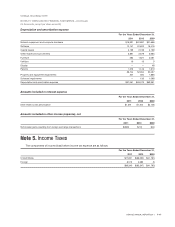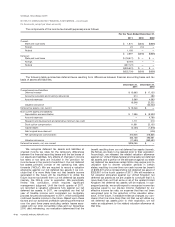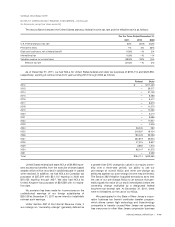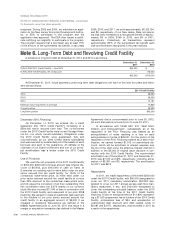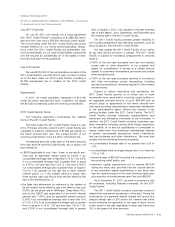Vonage 2011 Annual Report Download - page 67
Download and view the complete annual report
Please find page 67 of the 2011 Vonage annual report below. You can navigate through the pages in the report by either clicking on the pages listed below, or by using the keyword search tool below to find specific information within the annual report.VONAGE HOLDINGS CORP.
NOTES TO CONSOLIDATED FINANCIAL STATEMENTS—(Continued)
(In thousands, except per share amounts)
Cash and Cash Equivalents
We maintain cash with several investment grade finan-
cial institutions. Highly liquid investments, which are readily
convertible into cash, with original maturities of three
months or less, are recorded as cash equivalents.
Certain Risks and Concentrations
Financial instruments that potentially subject us to
concentrations of credit risk consist principally of cash
equivalents and accounts receivable. They are subject to
fluctuations in both market value and yield based upon
changes in market conditions, including interest rates, liq-
uidity, general economic conditions, and conditions specific
to the issuers. Accounts receivable are typically unsecured
and are derived from revenues earned from customers
primarily located in the United States. A portion of our
accounts receivable represents the timing difference
between when a customer’s credit card is billed and the
subsequent settlement of that transaction with our credit
card processors. This timing difference is generally three
days for substantially all of our credit card receivables. We
have never experienced any accounts receivable write-offs
due to this timing difference. In addition, we collect sub-
scription fees in advance, minimizing our accounts receiv-
able and bad debt exposure. If a customer’s credit card,
debit card or ECP is declined, we generally suspend
international calling capabilities as well as their ability to
incur domestic usage charges in excess of their plan
minutes. If the customer’s credit card, debit card or ECP
could not be successfully processed during three billing
cycles (i.e., the current and two subsequent monthly billing
cycles), we terminate the account. In addition, we
automatically charge any per minute fees to our customers’
credit card, debit card or ECP monthly in arrears. To further
mitigate our bad debt exposure, a customer’s credit card,
debit card or ECP will be charged in advance of their
monthly billing if their international calling or overage
charges exceed a certain dollar threshold.
Inventory
Inventory consists of the cost of customer equipment
and is stated at the lower of cost or market, with cost
determined using the average cost method. We provide an
inventory allowance for customer equipment that has been
returned by customers but may not be able to be reissued
to new customers or returned to the manufacturer for cred-
it.
Property and Equipment
Property and equipment includes acquired assets and
those accounted for under capital leases and consist
principally of network equipment and computer hardware,
furniture, software, and leasehold improvements. In addi-
tion, the lease of our corporate headquarters has been
accounted for as a capital lease and is included in property
and equipment. Network equipment and computer hard-
ware and furniture are stated at cost with depreciation pro-
vided using the straight-line method over the estimated
useful lives of the related assets, which range from three to
five years. Leasehold improvements are amortized over
their estimated useful life of the related assets or the life of
the lease, whichever is shorter. The cost of renewals and
substantial improvements is capitalized while the cost of
maintenance and repairs is charged to operating expenses
as incurred.
Our network equipment and computer hardware,
which consists of routers, gateways, and servers that
enable our telephony services, is subject to technological
risks and rapid market changes due to new products and
services and changing customer demand. These changes
may result in future adjustments to the estimated useful
lives or the carrying value of these assets, or both.
Software Costs
We capitalize certain costs, such as purchased soft-
ware and internally developed software that we use for
customer acquisition and customer care automation tools,
in accordance with FASB ASC 350-40, “Internal-Use
Software”. Computer software is stated at cost less accu-
mulated amortization and the estimated useful life is two to
three years.
Intangible Assets
Intangible assets acquired in the settlement of litigation
or by direct purchase are accounted for based upon the fair
value of assets received.
Patents and Patent Licenses
Patent rights acquired in the settlement of litigation or
by direct purchase are accounted for based upon the fair
value of assets received.
Long-Lived Assets
We evaluate impairment losses on long-lived assets
used in operations when events and changes in circum-
stances indicate that the assets might be impaired. If our
review indicates that the carrying value of an asset will not
be recoverable, based on a comparison of the carrying
value of the asset to the undiscounted future cash flows,
the impairment will be measured by comparing the carrying
value of the asset to its fair value. Fair value will be
determined based on quoted market values, discounted
cash flows or appraisals. Impairments are recorded in the
statement of operations as part of depreciation expense.
Debt Related Costs
Costs incurred in raising debt are deferred and amor-
tized as interest expense using the effective interest
method over the life of the debt.
VONAGE ANNUAL REPORT 2011 F-11


